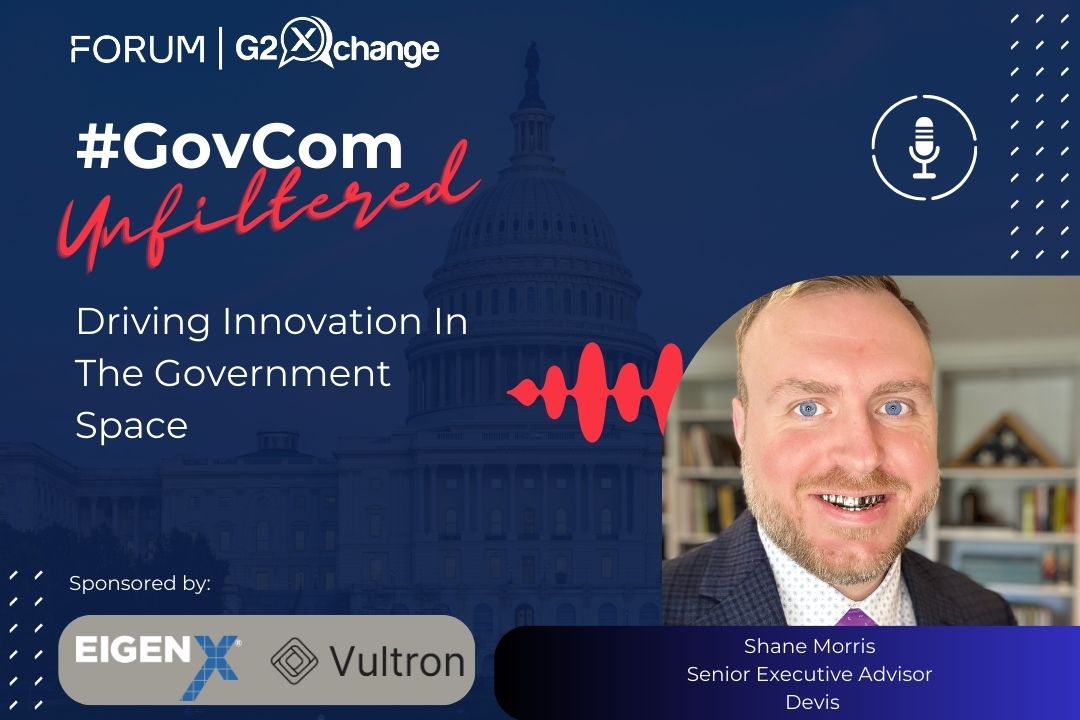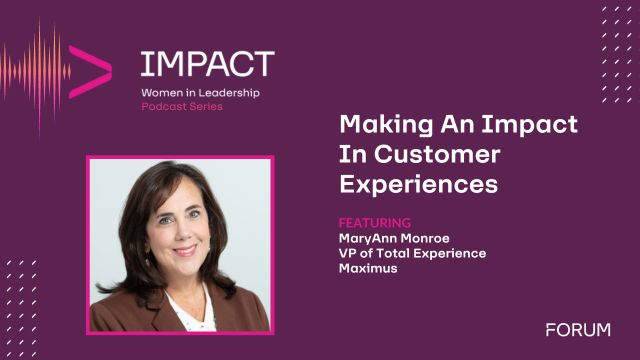This interview with Tom Dowd, KPMG Civilian Sector Leader; Joseph Klimavicz, KPMG Federal CIO Advisory Leader; and Amanda Sweeney, KPMG Director for Intelligent Automation and Digital Transformation, looks at disruptive technology and digital transformation.
Disruption is not About the Next Shiny Tool
Disruption is an often-overused term in our business lexicon that has become synonymous with the next-generation technology, a new whiz-bang approach to working or communicating, or a unique way of delivering services. Since we so freely use this term, one could say that we’ve diluted, exaggerated, or misinterpreted the true meaning, and even more so, the theory of disruptive innovation. As a result, we’ve created an environment in which many Government business and technology leaders are feeling they may be behind the curve.
Moving to embrace the next disruptive technology that promises to solve all of your organization’s problems does not put you ahead of the curve, just as avoiding does not mean you are behind.
Why? Most agencies and organizations have yet to fully unlock the potential of the established technologies already available to enable their digital transformation journey. Either singularly or in combination, technologies such as robotic process automation (RPA), machine learning (ML), artificial intelligence (AI), low-code and no-code platform solutions, advanced analytics, and cloud technologies, offer incredible capabilities, scale with agency programs, and can deliver an impressive ROI. The pervasiveness of more mainstream technologies in agencies spans the spectrum with some agencies fully committed and realizing dramatic productivity increases and cost savings, and others yet in the nascent stages with pilots and prototypes that are just showing promising results. The common focus, regardless of where these agencies are in their evolution, is on using the current technologies better, and with more effective focus and purpose.
Take a Holistic Approach
Digital technology is ubiquitous throughout industries and Government agencies. The integration or adoption of technologies has the potential to greatly improve services, reduce cost, enhance cyber security, and rapidly create value within an agency. However, it isn’t about one specific technology, rather the application of the right technology, at the right time and place to build a high-performance ecosystem. This kind of holistic transformation involves people, culture, processes, data, and technology. An agency that fails to consider these elements may see some incremental improvement, however, won’t realize the full benefits of its digital transformation journey.
The Cloud as a Foundation
Digital leaders are investing in the Cloud as a foundational digital enabler that has the ability to evolve with the business at market speed. Done correctly, the Cloud enables organizations to adopt lean, agile, and efficient operations, and services that may be implemented more easily by leveraging the digital backbone. Although the Cloud has become a mature foundational technology, both technical and non-technical challenges exist. These include ‘lifting and shifting’ current IT to the Cloud without the necessary transformation, failure to establish new governance structures and new ways of working to manage Cloud effectively, and limited understanding of its newer capabilities and skills required as a replacement for traditional IT roles. A combination of these factors can lead to ineffective and expensive use of the Cloud – making it difficult to secure future investments. The shape and direction of the enterprise Cloud program should be driven by business transformation objectives rather than simply as a hosting alternative, and Cloud-native tools should be leveraged to improve reliability, ease of management and to reduce operating cost.
Leading the Way
Creating the vision, inspiring the team, and staying the course demands strong leadership and engagement at the highest levels. Successful digital leaders today are focused on positioning the right people in the right roles and empowering them to take calculated risks, innovate, and “experiment.” Leadership must also focus on setting the direction, the pace of the transformation, and a clear and compelling multi-year strategy with a consistent set of top priorities. Digital transformation and innovation can’t happen without strong leadership and collaboration across the organization.
Avoid Re-inventing the Wheel
In many agencies, communities of practice or groups focused on applying emerging technology exist and they are organized along the same functional domain to solve similar challenges. RPA is a great example of how early adopter Government business users self-organized into a community of practice. These group members have been standing on each other’s shoulders and have built upon each other’s successes, gaining efficiency through sharing use cases. In our experience, now more than ever, we are seeing Government leaders collaborating and sharing solutions. This effort has helped to accelerate digital transformations and thus, multiple agencies are reaping the rewards faster and at a lower cost.
Consider the Customer User Experience as the Shiny Object
No matter the technology, start with the employee or customer experience in mind. Use humancentered design principles to understand the tasks the employee and customer perform and what that journey and experience can and should be. Look for opportunities to effect change along that journey. Reimagine the technology and capability stacks from the stakeholder’s perspective and how they interact with Government to redefine the processes across the agency.
Learn and Share
Digital transformations, based on new technology or the adoption of existing technology, fail for a variety of reasons. Some of the biggest reasons for failure are the lack of executive support or employee engagement. Defining success and setting expectations at the beginning, and establishing accountability and ways to measure progress, are crucial.
Failure can also come from a lack of communication and collaboration. Communication must be up front and continuous. Explain the purpose of the transformation so people don’t continue to do the same things in the same ways even when new technology may be in place. It is also important to bring in the right people with the right skillsets to support and collaborate with you through the transformation.
Get Started and Stay Focused
Begin the journey by exploring, particularly on the business side, technologies your agency currently has available and how they drive efficiency, productivity, and cost savings. In many cases, minimal investment in a prototype or a pilot project can help explore and evaluate technologies and the potential benefits of implementation. By using a pilot program, an agency can drive better procurement as the needs and expectations can be realistically defined. We have witnessed many of our clients start with some trepidation yet, with early success under their belts, become key players in their agency’s digital transformation efforts. Our advice: Just get started.
Most important, don’t lose sight of the problem you’re trying to solve or the outcome you’re trying to drive. Don’t be dazzled by the promise of shiny technology, instead, focus on the problem and understand how technology can serve you. Deploy the technology you have today in a more innovative and integrated fashion. Start simple.
About Tom Dowd
 Tom Dowd is KPMG’s Federal Civilian Sector leader and U.S. Department of Health and Human Services Lead Account Partner. He has a 25-year track record building and leading teams to help agencies navigate and respond to regulatory-driven changes, improve business operations, apply innovative technology solutions, and optimize the delivery of health and social services to citizens. Throughout his career, Tom has worked with mid-tier and large companies and Government agencies to plan and implement leading edge technology, optimize support operations, and modernize technology infrastructure to improve business performance and maximize investments.
Tom Dowd is KPMG’s Federal Civilian Sector leader and U.S. Department of Health and Human Services Lead Account Partner. He has a 25-year track record building and leading teams to help agencies navigate and respond to regulatory-driven changes, improve business operations, apply innovative technology solutions, and optimize the delivery of health and social services to citizens. Throughout his career, Tom has worked with mid-tier and large companies and Government agencies to plan and implement leading edge technology, optimize support operations, and modernize technology infrastructure to improve business performance and maximize investments.
About Joe Klimavicz
 Joe Klimavicz joined KPMG LLP as a Managing Director in March 2020 and leads the Government Chief Information Officer (CIO) advisory practice, helping Government clients implement digital transformations. Joe has nearly four decades of Government service beginning with the Central Intelligence Agency (CIA) as a scientist and culminating with the U.S. Department of Justice as Deputy Assistant Attorney General and CIO from May 2014 until March 2020. Joe also served as National Oceanic and Atmospheric Administration CIO and Director, High Performance Computing and Communications from 2007 until 2014, and as the National Geospatial-Intelligence Agency Deputy CIO from 2003 to 2007.
Joe Klimavicz joined KPMG LLP as a Managing Director in March 2020 and leads the Government Chief Information Officer (CIO) advisory practice, helping Government clients implement digital transformations. Joe has nearly four decades of Government service beginning with the Central Intelligence Agency (CIA) as a scientist and culminating with the U.S. Department of Justice as Deputy Assistant Attorney General and CIO from May 2014 until March 2020. Joe also served as National Oceanic and Atmospheric Administration CIO and Director, High Performance Computing and Communications from 2007 until 2014, and as the National Geospatial-Intelligence Agency Deputy CIO from 2003 to 2007.
About Mandy Sweeney
 Mandy Sweeney is a Director of Intelligent Automation at KPMG. She has been working with public sector and nonprofit clients to deploy and adopt innovative technologies for 14 years. Her experience spans a broad array of clients and technologies, from NASA and its cutting-edge aerospace mission technologies, to enterprise modernizations for the back office at HHS and GSA. She is an expert in the deployment of intelligent automation, especially RPA and low-code solutions, for Government agencies.
Mandy Sweeney is a Director of Intelligent Automation at KPMG. She has been working with public sector and nonprofit clients to deploy and adopt innovative technologies for 14 years. Her experience spans a broad array of clients and technologies, from NASA and its cutting-edge aerospace mission technologies, to enterprise modernizations for the back office at HHS and GSA. She is an expert in the deployment of intelligent automation, especially RPA and low-code solutions, for Government agencies.
The information contained herein is of a general nature and is not intended to address the circumstances of any particular individual or entity. Although we endeavor to provide accurate and timely information, there can be no guarantee that such information is accurate as of the date it is received or that it will continue to be accurate in the future. No one should act upon such information without appropriate professional advice after a thorough examination of the particular situation.
Other featured articles from this year’s edition are available here.












